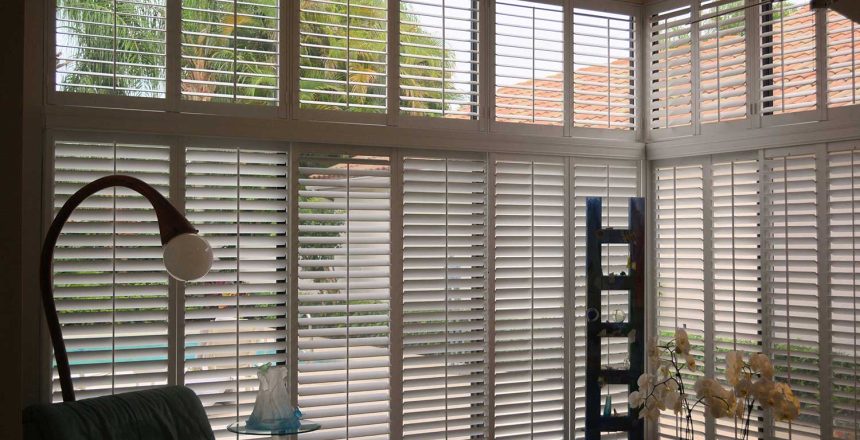Although plantation shutters are the current design rave for most residential owners, these louvered shutters have been around since ancient Greece. Back then, the shutters were made of marble and other hard materials with fixed louvers. Over the decades, wood replaced the hard materials and the placement of the louvers became more flexible.
If you are thinking of adding value and sophistication to your home, wood plantation shutters are the best. These interior wood shutters have many benefits including greater energy efficiency and consumption, easier maintenance, long-lasting, durable, and are allergy friendly while meeting the reasons for having windows in the first place. Windows are needed for ventilation, natural lighting, and as emergency exits.
In order to bring plantation custom wood shutters to the next level of interior design without spending an exorbitant amount, here are some simple design rules to know and follow:
Rule #1 Be selective with your supplier. There are many vendors of interior wood shutters but many offer a generic design made outside the United States. There is a high probability that these generic shutters will required a decision to either renovate the window to fit the shutters or have ill-fitting shutters which is very impractical and unseemly.
Rule #2 Less panels look better than more panels. Best to avoid the overcrowded aesthetics with too many panels. To accomplish this, you should opt to work with companies that can do custom wood shutters. They have the technology and manufacturing know-how on making the interior wood shutters from scratch. Does this mean a more expensive contract? Not necessarily because if you use Architectural Plantation Shutters, you will have access to competitive pricing since the company has a flawless system that ensures reasonable cost for US-made goods.
Rule #3 Use real wood. Synthetic, PVC, or vinyl shutters have been scientifically proven to release substances known as phthalates when heated that can cause illness, reproductive issues, birth defects, and cancer. Do not believe in products that promise “bacteria-free” shutters because this would be impossible to attain. There are no shutters that can be resistant to bacteria or germs.
These are what scientists say about synthetic shutters:
- Sunlight and heat will discolor the shutters and cause staining which means you will eventually have cracks and will have to replace them
- These types of shutters have a glossy finish which attracts dust, dirt, and other small particles. If they scratch the gloss off (happens when you clean the shutters), you allow the emission of toxins into the air.
Although synthetic shutters are cheaper, they don’t last as long as solid wood shutters and do not look as elegant. Thus, you don’t get to add much value to your home by using synthetic shutters.
Rule #4 Go ahead! Use Architectural Plantation Shutters on small windows. Not long ago, interior designers were pretty vehement about using plantation shutters for small windows because they make the window look heavy. This is no longer an issue with custom wood shutters because companies that provide custom made shutters can change the dimensions and thickness of the louvers to avoid the issue of bulkiness.
The key is to work with a professional plantation shutter team that knows exactly what to do to create the ideal window!
